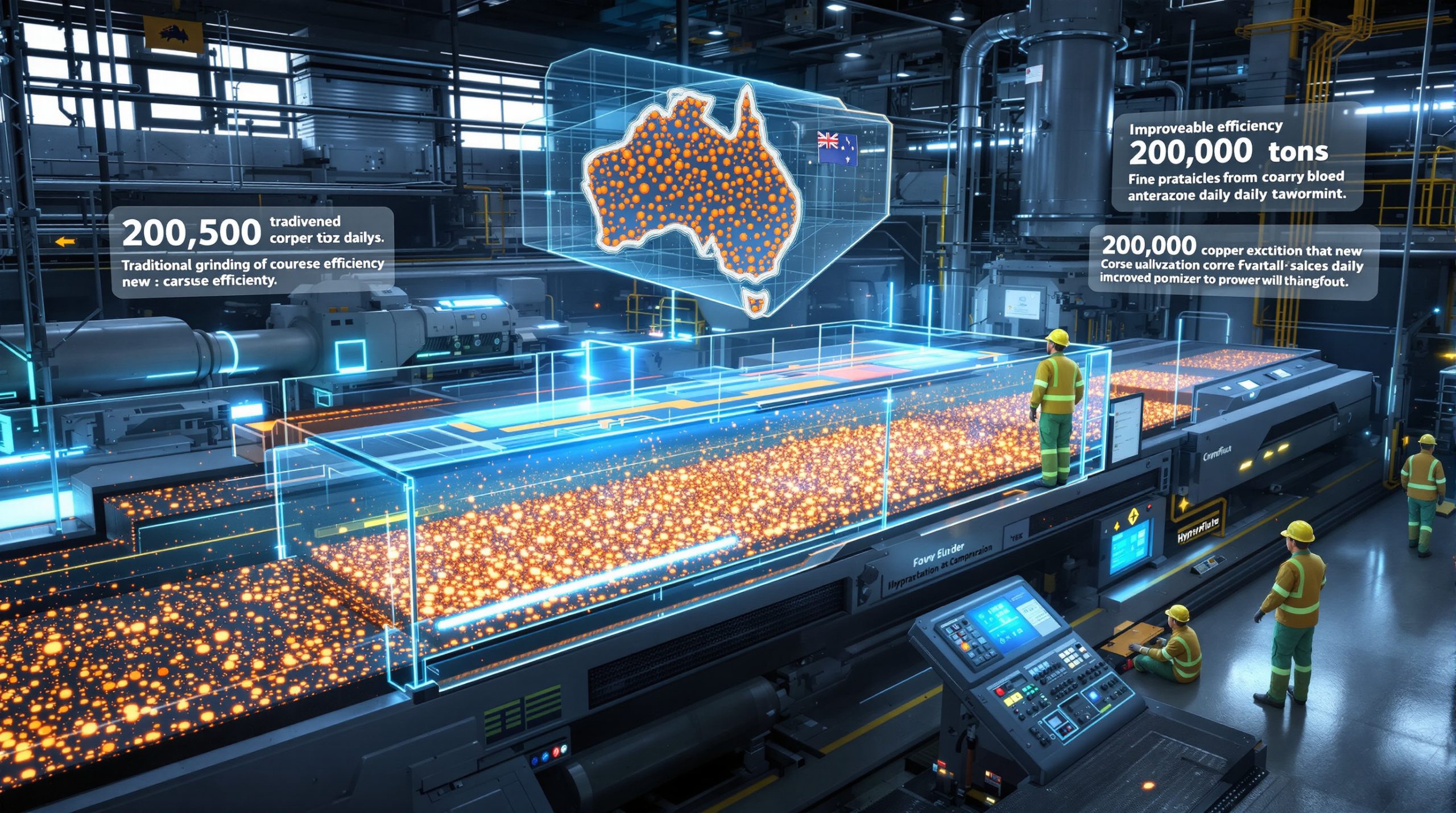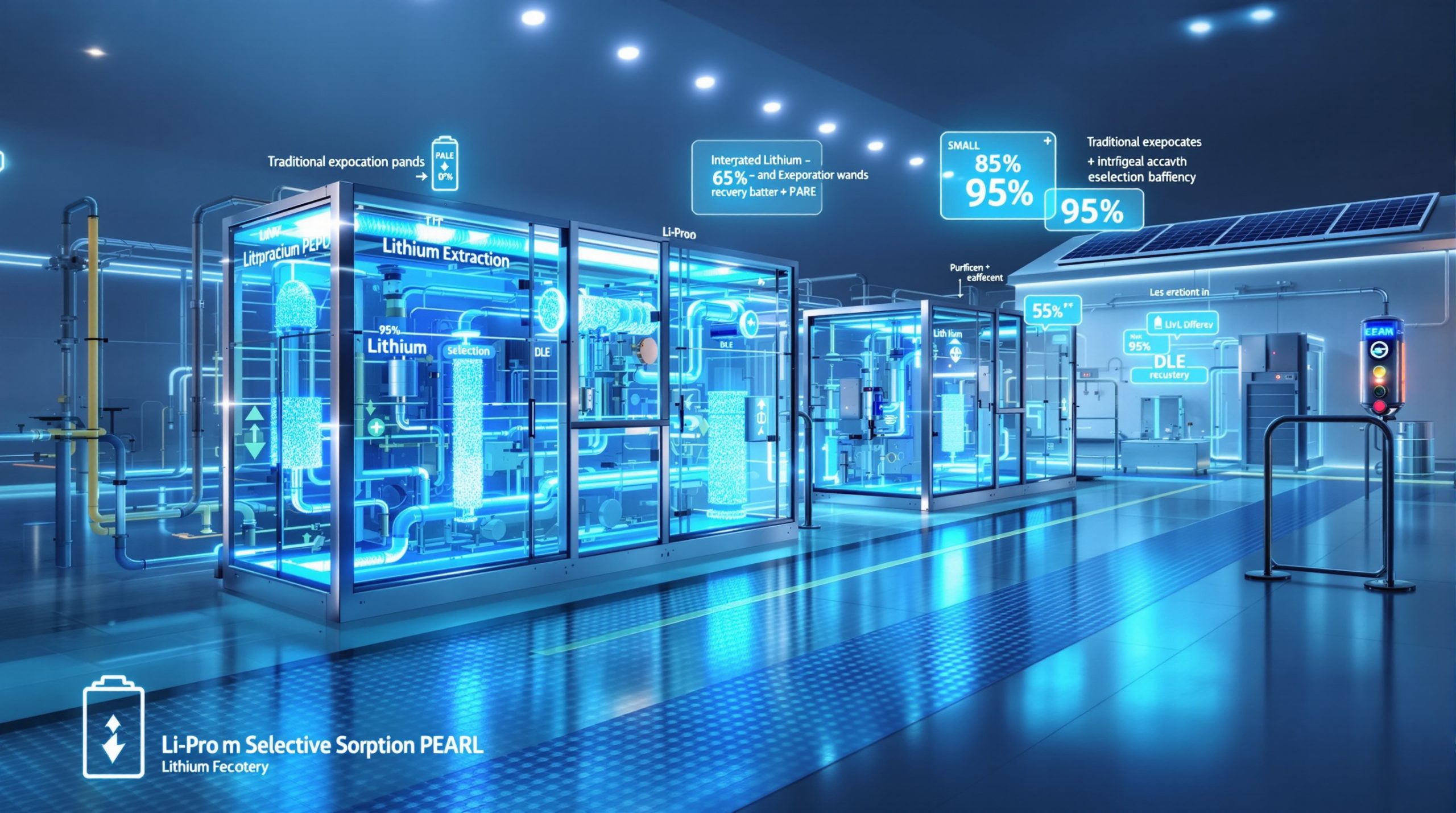Mining and Commodity Outlook: Strategic Positioning in a Changing Landscape
The global mining sector stands at a pivotal juncture as energy transition, technological innovation, and geopolitical shifts reshape commodity markets. This transformation is creating unprecedented opportunities for strategic investors who understand the structural advantages of certain commodities, particularly copper and uranium, in the evolving resource landscape. Orion's Lewnowski on mining and commodity outlook provides valuable insights into how these fundamental changes are reshaping investment strategies across the sector.
What Are the Current Supply-Demand Dynamics Across the Commodity Landscape?
The mining industry faces a fundamental mismatch between supply capabilities and accelerating demand, creating investment opportunities in key commodities that are structurally positioned for growth.
Copper Market Fundamentals
Copper markets are experiencing significant supply constraints that show no signs of abating. Global copper production capacity currently stands at approximately 21 million tonnes annually, while demand projections indicate requirements could reach 30 million tonnes by 2030 – a 50% increase driven primarily by electrification initiatives.
Declining ore grades present a substantial challenge, with average copper grades falling from 1.6% to below 1% over the past two decades at major producing mines. This decline necessitates processing more material to yield the same amount of copper, increasing costs and environmental footprints.
Regional supply distribution creates additional risks, with Chile and Peru accounting for nearly 40% of global copper production. Recent political developments in these regions, including changes to mining codes and increased royalty requirements, have complicated expansion efforts at existing operations. The push for copper clean energy investments continues to grow despite these challenges.
Uranium's Resurgence
The uranium market exhibits perhaps the most pronounced supply-demand imbalance in the commodity sector. Current global production of approximately 140 million pounds falls significantly short of the 180 million pounds required by operating nuclear reactors, with the deficit currently filled by secondary supplies and inventory drawdowns.
Uranium prices have responded accordingly, rising from $20/lb in 2020 to over $100/lb in 2024, reflecting the market's recognition of structural undersupply. This price movement has occurred despite minimal new reactor connections to the grid, suggesting the current rally is primarily supply-driven rather than demand-driven.
The impact of strategic reserves is diminishing as both commercial and government inventories reach critical levels. The suspension of the U.S. Department of Energy's uranium sales program has removed approximately 2 million pounds annually from secondary supply. Detailed uranium market analysis shows this trend is likely to continue.
Critical Minerals Supply Chain Challenges
Key bottlenecks in mineral extraction and processing represent significant challenges for the energy transition. Processing capacity for rare earth elements remains heavily concentrated in China, which controls over 85% of global processing capabilities.
The timeline for bringing new mineral supply online has extended significantly, with the average copper mine now taking 16-20 years from discovery to production, compared to 8-10 years in previous decades. This extended timeline compounds supply challenges in meeting rapidly accelerating demand. Furthermore, critical mineral shortages continue to impact the global clean energy transition.
How Are Energy Transition and Technology Trends Driving Commodity Investment?
The global push toward decarbonization and technological advancement is transforming commodity markets, creating structural demand shifts that favor certain minerals.
Electrification's Impact on Metal Demand
Renewable energy infrastructure is exceptionally copper-intensive, with solar installations requiring approximately 5 tonnes of copper per megawatt – roughly double the copper intensity of conventional power generation. Wind power is even more copper-intensive at 7-8 tonnes per megawatt.
Battery mineral demand projections through 2030 suggest a 10-fold increase in lithium requirements, 5-fold increase in cobalt, and 3-fold increase in nickel. The material intensity of electric vehicles is particularly significant, with the average EV requiring 83 kg of copper compared to 23 kg in conventional vehicles.
Grid infrastructure upgrades represent another substantial source of metal demand, with the International Energy Agency estimating that transmission and distribution networks will need to expand by 80 million kilometers by 2040 – enough to circle the Earth 2,000 times.
Nuclear Renaissance and Uranium Demand
The nuclear sector is experiencing a renaissance, with projected global capacity additions of 120 GW by 2035, representing a 30% increase over current capacity. China alone plans to build 150 new reactors by 2035, more than the entire current U.S. fleet.
Small modular reactor (SMR) technology is gaining momentum, with over 80 designs under development globally. These compact reactors typically require enriched uranium at 5-20% U-235 (compared to 3-5% for conventional reactors), potentially increasing uranium demand per megawatt of capacity.
National energy security considerations have driven policy shifts in multiple countries, including lifetime extensions for existing nuclear plants in Belgium, Germany, and Japan, preserving uranium demand that was previously expected to diminish. According to a recent Bloomberg podcast on the mining outlook, these developments have fundamentally changed the long-term outlook for uranium.
Technology-Driven Demand Shifts
Emerging technologies are creating entirely new mineral requirements. Quantum computing applications require ultra-pure rare earth elements, while advanced semiconductor manufacturing uses specialized gases derived from elements like xenon and krypton.
Digital transformation in mining operations is improving efficiency but also requires substantial infrastructure investment. Remote operations centers, autonomous equipment, and predictive maintenance systems are becoming industry standards, necessitating significant capital expenditure.
What Structural Advantages Do Copper and Uranium Possess?
Certain commodities possess inherent characteristics that position them advantageously in the evolving resource landscape.
Copper's Irreplaceable Properties
Copper's electrical conductivity (97% that of silver at 15% of the cost) makes it essentially irreplaceable in electrical applications. Aluminum, the closest potential substitute, offers only 61% of copper's conductivity while requiring significantly larger wire diameter to carry equivalent current.
The metal's versatility extends across multiple industries, from construction (approximately 28% of demand) to electronics (23%), transportation (12%), infrastructure (16%), and industrial machinery (21%). This diversity of end uses provides resilience against sector-specific downturns.
Recycling potential for copper exceeds 90% with minimal loss of performance, creating circular economy opportunities. However, the long life of copper applications (15-40 years in buildings, 10-20 years in equipment) means recycling cannot address near-term demand growth.
Uranium's Energy Density Advantage
Uranium's energy density vastly exceeds all alternatives, with one uranium fuel pellet (roughly the size of a pencil eraser) containing the energy equivalent of one ton of coal. This density enables nuclear plants to operate for 18-24 months on a single fuel load, enhancing operational stability.
The carbon emissions profile of nuclear power (12g CO₂/kWh lifecycle) compares favorably to solar (45g CO₂/kWh), wind (11g CO₂/kWh), and natural gas (490g CO₂/kWh), positioning nuclear energy as essential for meeting climate goals while maintaining grid reliability.
Long-Term Supply Constraints
Lead times for new mine development have extended dramatically, with major copper projects now averaging 16+ years from discovery to production. This timeline extension results primarily from increasingly complex permitting processes and environmental requirements.
Capital intensity requirements have escalated, with new copper mines typically requiring $15,000-$20,000 per tonne of annual production capacity – meaning a moderate-sized 100,000-tonne-per-year operation needs $1.5-2 billion in upfront investment before generating revenue. These economic factors are thoroughly examined in comprehensive mining feasibility studies that assess project viability.
How Is Mine Construction Financing Evolving?
The financing landscape for mining projects continues to transform in response to changing market conditions and investor preferences.
Funding Models for New Mine Development
Traditional debt financing for mining projects has become more challenging to secure, with many commercial banks reducing exposure to the sector. This retreat has created opportunities for alternative financing structures like streaming and royalty arrangements, which now account for approximately 25% of mining finance.
Strategic partnerships between miners and end-users are becoming increasingly common, with automotive manufacturers and battery producers taking equity stakes in mining projects to secure supply chains. These arrangements often include offtake agreements that provide development capital in exchange for future production.
Investment Horizon Considerations
The timeframes required for return on capital in mining projects have lengthened considerably. Whereas investors historically expected payback periods of 3-5 years, modern mining projects typically require 7-10 years to recoup initial investments – necessitating "patient capital" with longer investment horizons.
Managing timeline extensions and cost overruns remains a critical challenge, with approximately 70% of major mining projects experiencing delays and 60% exceeding initial budget estimates by 15% or more.
What Geopolitical Factors Are Reshaping Mining Investment?
Geopolitical considerations increasingly influence mining investment decisions as governments recognize the strategic importance of mineral resources.
Resource Nationalism Trends
Government policies toward resource extraction are evolving rapidly, with at least 42 countries implementing significant changes to mining codes or royalty regimes since 2020. These changes generally increase state participation in profits and operational oversight.
Strategic mineral designations have proliferated, with the U.S., EU, Japan, and Canada all establishing official lists of critical minerals that receive policy support. These designations often translate into expedited permitting, tax incentives, or direct subsidies for domestic production.
Supply Chain Security Initiatives
National critical mineral strategies have emerged as priorities across major economies. The U.S. Defense Production Act now extends to battery minerals, while the EU's Critical Raw Materials Act establishes specific domestic production targets for strategic minerals.
Government incentives for domestic production are expanding rapidly, with the Inflation Reduction Act providing tax credits for domestically-sourced battery materials and the EU establishing a €3 billion Critical Raw Materials Fund to support European projects. As noted by Oskar Lewnowski in a Resource Insider podcast, these policy shifts are fundamentally changing the economics of mining projects.
How Are Environmental and Mining Interests Finding Common Ground?
The historical tension between environmental protection and resource development is evolving toward more collaborative approaches as both sectors recognize their interdependence.
Alignment on Responsible Resource Development
Modern mining operations increasingly employ technological innovations that significantly reduce environmental impacts. Computer modeling and precision blasting reduce waste rock generation by up to 30%, while water recycling systems can achieve 85-95% recirculation rates at advanced operations.
Rehabilitation and closure planning now begins during project design rather than as an afterthought. Progressive rehabilitation techniques, where portions of mining sites are restored while operations continue elsewhere, are becoming industry standard practices.
Critical Minerals for Climate Solutions
Lifecycle analysis increasingly demonstrates the net environmental benefit of mineral production for green technologies. An electric vehicle typically "pays back" its manufacturing emissions within 6-18 months of operation compared to conventional vehicles, depending on grid mix.
Collaborative approaches between environmental organizations and mining companies are emerging, focused on developing best practices that minimize ecological disruption while ensuring material availability for climate solutions.
FAQ: Mining and Commodity Investment
What timeframe should investors consider when evaluating mining opportunities?
Mining investments require patience, with exploration projects typically taking 5-10 years to reach production if successful. Capital recovery periods vary by commodity but generally range from 7-12 years for base metals operations. Investors should consider commodity cycle positioning, as prices can fluctuate 200-300% between cycle bottoms and peaks.
How do supply constraints affect long-term pricing for critical minerals?
Historical evidence demonstrates that sustained supply constraints eventually translate into price responses sufficient to incentivize new production. Copper, for instance, may require sustained prices of $4.50-5.00/lb to justify development of the next generation of lower-grade deposits. Elasticity of demand varies significantly between metals, with copper showing relatively low price elasticity (-0.2 to -0.3) due to limited substitution options.
What role does recycling play in future mineral supply?
Current recycling rates vary dramatically between metals, with copper achieving approximately 45% recycling rates globally, while specialized technology metals like indium and gallium see recycling rates below 1%. Technological barriers to increased recycling include the complexity of modern products and the dispersed use of certain elements in trace amounts. The circular economy transition is advancing most rapidly in regions with developed infrastructure and regulatory support, particularly the EU and Japan.
Ready to Spot the Next Mineral Discovery Opportunity?
Stay ahead of the market by receiving instant notifications when significant ASX mineral discoveries are announced, powered by Discovery Alert's proprietary Discovery IQ model. Explore how major mineral discoveries can lead to exceptional returns by visiting Discovery Alert's dedicated discoveries page and position yourself for success.




